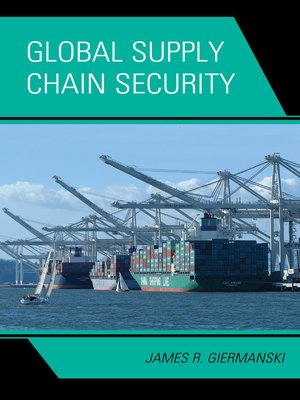
Sign up to save your library
With an OverDrive account, you can save your favorite libraries for at-a-glance information about availability. Find out more about OverDrive accounts.
Find this title in Libby, the library reading app by OverDrive.



Search for a digital library with this title
Title found at these libraries:
| Library Name | Distance |
|---|---|
| Loading... |
In this timely work, James Giermanski describes the advent and development of security operations in the global supply chain, outlining the respective contributions of governmental and nongovernmental stakeholders to this worldwide concern. Global Supply Chain Security explores the potential impact of port-related catastrophic events in the United States and their effects worldwide, concentrating, in particular, on the United States' contribution to global container security.
Offering insights on deficiencies in U.S. policies, Giermanski underscores the vulnerabilities in the supply chain that U.S. government agencies have ignored, avoided, and even denied. Global Supply Chain Security treats both the terrestrial and maritime borders of the United States, reserving for special analysis the threat to the nation's southern border of hazardous materials or materials in transshipment or in-bond, as well as the questionable leadership exhibited by the Department of Homeland Security in its diagnosis and treatment of these threats. Finally, Giermanski covers the important role played by the private sector and the off-the-shelf, innovative products that have been introduced to supply chain management and security.
Offering insights on deficiencies in U.S. policies, Giermanski underscores the vulnerabilities in the supply chain that U.S. government agencies have ignored, avoided, and even denied. Global Supply Chain Security treats both the terrestrial and maritime borders of the United States, reserving for special analysis the threat to the nation's southern border of hazardous materials or materials in transshipment or in-bond, as well as the questionable leadership exhibited by the Department of Homeland Security in its diagnosis and treatment of these threats. Finally, Giermanski covers the important role played by the private sector and the off-the-shelf, innovative products that have been introduced to supply chain management and security.







